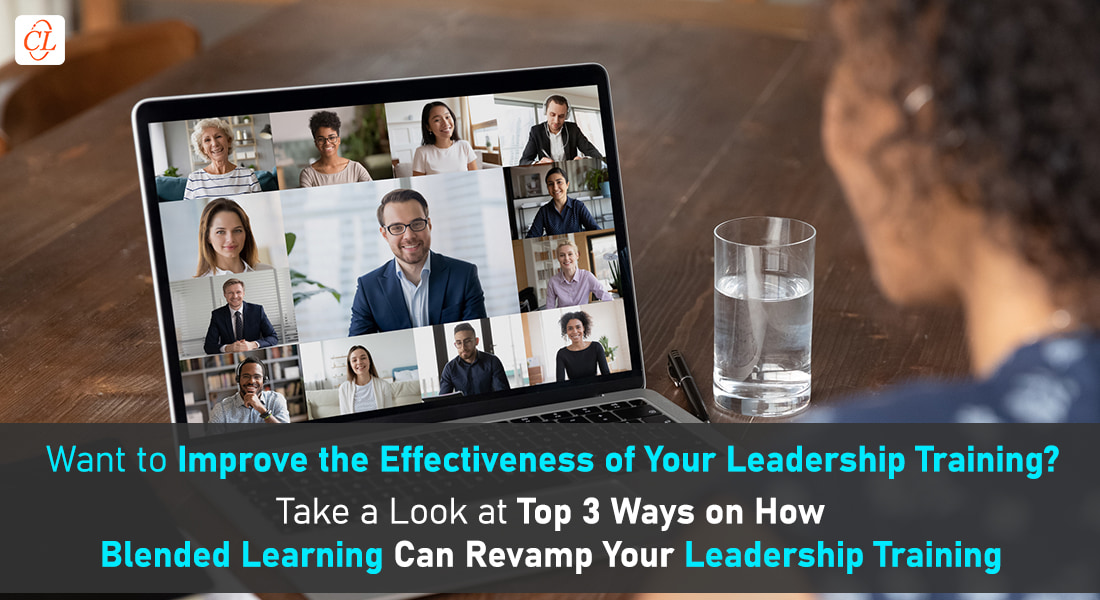How to Make Leadership Training More Effective

Leadership skills are built through a range of options that include training (experiential, social, and self-directed), coaching, mentoring, and so on. To create long-term success, organizations must invest in Leadership Training to handle key positions.
There are multiple factors that decide the success of an organization. However, a strong leadership team is always an asset that will help an organization stay ahead of the competition. A great leadership team will help you achieve the desired business results by creating high-performing teams. Leadership development initiatives help create confident and competent leaders across all levels. A well-crafted and well-planned leadership training leads to a strong, productive, engaged, and highly motivated team that is aligned with the business goals.
Leadership is a skill that requires time and experience to master. It is not just a few books that will make you a great leader. Learners will have to adopt ways that will help them to achieve the goal of behavioral change to become good leaders. While future leaders take on this journey to make a significant impact. We have a few tips that might help with the process. Here are a few learning strategies that can help you make leadership training more effective.
Looking For Ways to Make Leadership Training More Effective?
Here Are a Few Learning Strategies That Can Help
- Mobile Learning
- Microlearning
- Personalized Learning
- Blended Learning
Learning Strategies for Effective Leadership Training
Mobile Learning
Mobile learning is no doubt a great learning strategy for leadership training due to the flexibility it provides. Mobile learning gives learners the freedom to access the training on the go and on the device of their choice. Learners can learn at their own pace. Leadership training is not like reading the content from a book. It is so much more and requires an individual to apply what has been learned to gain experience. Mobile learning allows them to sync the learning and also practice the skills that they have gained.
Explore ways mobile learning can support various types of training in this webinar recording.
Microlearning
Leadership training is a lot different from other types of training where the focus is not only on learning but applying the knowledge to see the outcomes and perfect it by practice. A good leader is not someone who just reads from a handout, instead, they have to learn how to make an impact that brings a positive change.
Microlearning is one such strategy that can be availed for leadership training. While these future leaders have so much on their plate, they do not have time to go through lengthy courses. Hence, comes the small digestible bite-sized information nuggets to the rescue. Microlearning! Yes, microlearning is focused and action-oriented, the focus is on the need-to-know information rather than nice-to-know information. While each microlearning module focuses on a single learning outcome. Just what great leadership training requires, saving time and effort to also focus on other aspects of leadership training.
Personalized Learning
A customized learning experience increases a learner’s commitment and motivation. Leadership training is a learning journey and creating personalized learning for the learners ensures a great learning experience for them. Now we know that leadership training is so much more than just the training content. Through personalized learning, you can utilize surveys, questionnaires, pre-test, quizzes, case studies, etc. that are going to help learners assess where they stand and work ahead from there. You can also combine microlearning and mobile learning to create focused learning modules that can be accessed from the preferable device creating highly customized learning paths for each level.
Blended Learning
Leadership is a skill that cannot be taught with just a course. A successful leadership training program is not just a few classes or seminars it is a learning experience or a learning journey. A blended learning approach helps the organization to curate such a learning journey for future leaders. A combination of approaches can help personalize leadership training and make it more relevant, engaging, and immersive. You can blend various learning formats that can be applied at various phases of leadership training getting you the best learning outcome. A great combination of various learning approaches makes the entire experience challenging yet rewarding. The knowledge gained is easy to learn and retain and quick to apply on the job.
Role of VR (Virtual Learning) For Effective Leadership Training
2023 is here, and we are witnessing changes beyond expectations. We are already aware of the important role virtual reality plays in learning and development. Let us see how virtual reality is changing the way we train the leaders of the future.
Virtual reality can completely change what leadership training looks like. Virtual reality offers the opportunity for learners to practice and apply skills in a safe, risk-free, and judgment-free environment. Learners can make mistakes and learn from them to readjust. Thus, gaining confidence and gaining experience to tackle difficult situations. Well, the future of learning is here and it looks bright. We have an exciting journey ahead of us to experience how these immersive and innovative technologies will change the way we train.
Are You Ready to Train the Leaders of the Future?
Well, there is no right or wrong when it comes to leadership training because it is more about the experience and learning from each instance. A good leadership training is well crafted learning journey for someone to take important positions in future making it an important part of the well thought out plan. For effective training you will have to consider the best options within your budget and deadlines. Of course, there will be challenges but the outcome will be very rewarding. So, take your time to decide what is best for the learners and just in case there is a doubt, you can always blend it!
Talking about blending it. In case you want to know more here is a guide to explore all about blended learning.





